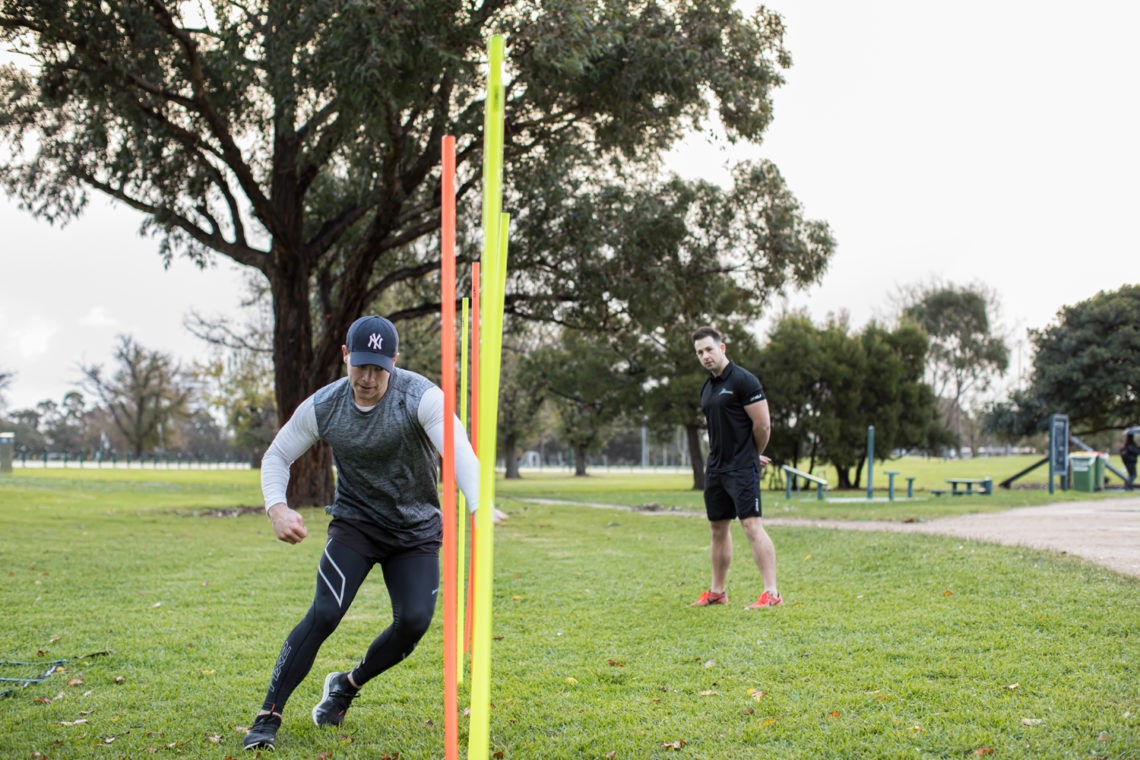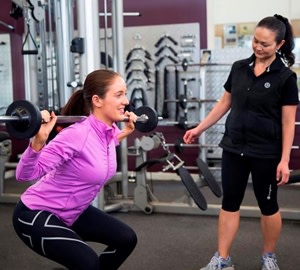As a Fitness Professional, having Personal Trainer insurance is an absolute must. Whether you run your own personal training business, rent a space in a gym, work for a business, or are still completing your studies, obtaining the right level of cover is an important step to take before training clients. The topic of insurance is far from exciting, but it does help form the foundations you need to start working as a Personal Trainer or Group Fitness Instructor, which most certainly is exciting! A few different types of insurance are available to fitness professionals, so it’s important to understand which cover is right for you. Let’s break down some of the nitty grittys and unpack some of the options that are available to you.
Firstly, as an AFA student studying either the Fitness Fundamentals, Certificate III or Certificate IV in Fitness, you are eligible to receive FREE insurance through the Academy. AFA’s insurance covers you for practical placements and work experience completed in facilities throughout Australia.
If you wish to arrange an alternative PT insurance provider as a student, AUSactive offers student memberships for $25. Being a Student Member with AUSactive provides you with some additional benefits within the organisation, and once you have finished your qualifications the cost of your student membership will be deducted from price of becoming a registered professional.
For those that elect to use AUSactive for their student insurance, this should be arranged prior to commencing work experience.
Do Personal Trainers Need Insurance in australia?
Not legally but there are benefits to having it. Consider the risks involved with being a PT – see our article on How to Avoid Common Injuries in the Gym.
“Almost all gyms and studios will require PTs to have their own insurance, and it’s a preqrequisite for working outdoors and obtaining council permits.”
Therefore, while not legally required, we would strongly recommend, once you have completed your studies and are ready to enter the industry as a fitness professional, you get a quote for, and purchase an insurance policy. At a minimum, you will need to take out both Public Liability and Professional Indemnity insurance. Almost all gyms and studios will require you to have your own insurance, and it is a prerequisite for working outdoors and obtaining council permits.
“In Australia, personal trainers face a self-regulated industry with specific regulations varying by state, especially regarding adherence to a Code of Practice developed by Fitness Australia, which is mandatory in some states and voluntary in others. Fitness Australia’s guidelines aim to ensure national standards and best practices across the health and fitness industry.” [Source]
What Type of Insurance Do I Need?
Public Liability:
Public liability insurance will provide protection for you and your business in the event that a member of the public makes a claim that they were injured, or damage was caused to their property because of your business dealings or on your premises.
An example of this would be if your client trips over a piece of fitness equipment and fractures their wrist. Your client would be able to seek compensation from you for the injury, together with medical costs and loss of income. While you would never intend for something like this to happen, it’s important to have the piece of mind that you are covered in the unlikely event that it does.
Professional Indemnity:
Professional indemnity insurance covers you for claims that arise when a third party, usually a client, alleges that your professional advice, design or service as a fitness instructor or personal trainer was negligent and caused them a loss.
Examples of this could be a personal injury claim as a result of negligence, or creating a training plan that is unsuitable or ineffective.
Depending on your situation, you might want to take out some additional policies to ensure you are prepared for and financially covered for any unwanted situations that may arise. These three are some we recommend looking into:
Income Protection Insurance:
As a personal trainer, you need to be able to remain physically active in order to perform a role for your clients. If an illness or injury strikes you down, it is likely you will need to take time off work to recover. This may lead to a period of time where you are unable to earn an income. Income protection insurance will provide you with a percentage replacement of your regular income while you recover from an injury or illness, ensuring bills and living expenses can still be paid for while you’re not working.
Contents/Equipment Insurance:
If you own your fitness equipment, contents insurance is definitely worth considering. Purchasing fitness equipment can be expensive, so it’s a good idea to be covered against any loss, damage or theft.
Business Insurance:
Business insurance protects your business from a number of different risks. If your staff fall ill or get injured, if a client has an accident, or if vital equipment is stolen or destroyed, business insurance can cover such costs. Owning your own business comes with a certain level of risk – taking out business insurance will give you the peace of mind that you are protected for situations that may occur.
Where to Get Insurance?
Before purchasing any Personal Trainer insurance, do your research! A good place to start is with the three main industry bodies, being AUSactive, FITREC and Physical Activity Australia. All three organisations refer you to reputable insurance companies who have experience delivering fitness insurances:
- AUSActive – Guild Insurance
- FITREC – Gallagher Insurance & Bizcover
- Physical Activity Australia – Marsh Insurance
Applications can be completed online and will usually cover you for a 12-month period.
In Summary:
Making sure that you have PT insurance in place before you step foot on the gym floor or use an outdoor space is an essential part of working as a Personal Trainer in Australia. Gyms will insist on seeing valid insurance documents, along with your relevant qualifications before letting you take classes or train clients. If you’re a PT that uses outdoor spaces to train your clients, it’s important that you’ve had permission from your local council to do that which requires insurance before you apply.
When deciding on the type of policy you need, make sure you check that the policy covers you for the particular role that you are doing, how much the premium costs, and whether you have to pay an excess when making a claim.
So while yes, personal trainer insurance is not a fun topic to talk about, it certainly is important!
Faqs
DO I NEED INSURANCE TO WORK AS A PERSONAL TRAINER IN AUSTRALIA?
It's not a legal requirement, but it is highly recommended. There are also specific situations to be considered, such as where it's taking place or how many people are involved. As situations are unique as they are wide, we recommend doing your due diligence. It's also important to note that many employers, gyms, and fitness centers often require PTs to carry insurance. If this is you, ask and confirm.
WHAT TYPE OF INSURANCE DO I NEED AS A PERSONAL TRAINER?
The most common types of insurance PTs need are Public Liability and Professional Indemnity. The following are also recommended: Income Protection, Contents/Equipment, and Business Insurance.
ARE THERE INSURANCE POLICIES THAT COVER BOTH PUBLIC LIABILITY AND PROFESSIONAL INDEMNITY?
Yes, there are.
HOW MUCH INSURANCE DO I NEED?
It depends on your business and services. Do your research and check out the three main industry bodies: AUSactive, FITREC and Physical Activity Australia for guidance.
HOW DO I FIND THE RIGHT INSURANCE POLICY?
A good place to start is with the three main industry bodies: AUSactive, FITREC and Physical Activity Australia. All three organisations refer you to reputable insurance companies who have experience delivering fitness insurances. And do your research.
IS IT NECESSARY TO BE CERTIFIED TO WORK AS A PERSONAL TRAINER IN AUSTRALIA?
To be a personal trainer, you must have completed a Certificate III in Fitness at a minimum and a Certificate IV in Fitness if you wish to train individual clients.
CAN I TRAIN CLIENTS IN PUBLIC SPACES OR PARKS?
This may depend on where you plan to provide your services. For example, in Melbourne any personal training on public land that provides commercial benefit requires a permit.
WILL I NEED INSURANCE IF I'M RENTING A SPACE IN A GYM OR FITNESS FACILITY?
Most gyms and studios are likely to require PTs have their own insurance. Check in with the landlord and/or facility.









